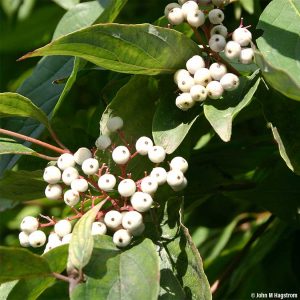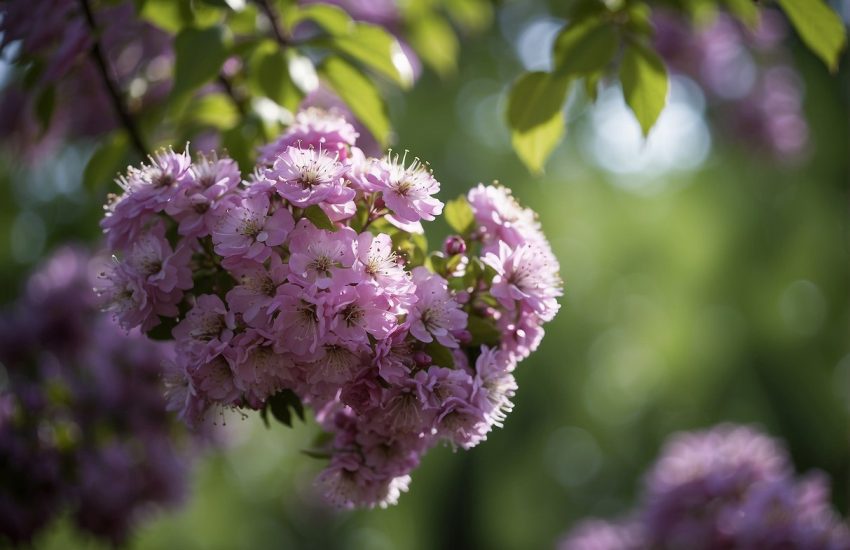The Best Dogwood Varieties to Grow in Oregon
The dogwood tree can easily explode with a variety of flowers expressing beautiful colors that include red, pink, and white. All of these colors come about on the branches, which can make the tree the most attractive feature of your landscape. The dogwood blooms are considered a grand undertaking during spring. However, this show of colors is not only a springtime event.
Out of all of the trees that flower, the dogwood provides both appeal and colors on a yearly basis. Not only that, but the blooming is also a good reason to make the dogwood an excellent part of your Oregon landscape.
When summer arrives, you will experience the vast array of berries that popup and provide a beautiful backdrop to the richness of the leaves. You may even witness the production of berries later in the fall. By the time fall does come around, the leaves of the dogwood will begin to transform and turn their leaves into many brilliant color shades such as red, orange, and scarlet.
When it comes to fertilizing, a dogwood does not require much if compost mulching is completed annually. However, if your dogwood is young, then providing it with a fertilizer that feeds slowly will benefit it greatly. After your dogwood grows, it will feed off of the organic mulch that gets created by the microorganisms that break down the mulch.
There are many varieties of dogwood, the following dogwood trees are the best types that you can grow in Oregon.
Flowering Dogwood
The flowering dogwood is the variety that many think of when discussing dogwood trees. The flowering dogwood is a deciduous variety that provides a variety of colorful blooms ranging from white to red in the spring.
Their green leaves are lush and begin to change to red during fall months as fruit begins to develop. After it fruits, there will be buds appearing on its branches as winter approaches.
To get the most out of this dogwood, the area should have shade in the afternoon as well as soil that is acidic. The flowering dogwood can grow to be more than 15 feet and have a trunk that is 12 inches wide.
You need to be aware that dogwood anthracnose may occur. In order to eliminate this, the branches that are affected need to be removed.
Common Dogwood

A native dogwood of Western Asia and Europe, the common dogwood is characteristic of a variety of stems. Its leaves are distinguished by their elliptical shape and blooms that are dull and white, which provide a spring sprouting.
Toxic berries begin to grow throughout August and are poisonous if consumed.
The leaves in fall become a hue of red and purple. As a young shrub, it may involve stems that are red . However, the red color will disappear and be replaced with green as it grows and becomes mature.
Pruning of the common dogwood should take place every year. If pruning does not take place, then it will spread like wildfire.
Mountain Dogwood

Also known as the Pacific Dogwood, the mountain dogwood is able to withstand dry conditions and areas with a lot of shade. Sometimes, it will be confused for a flowering dogwood.
The difference though, is that the mountain dogwood blooms are larger in size with the foliage color ranging from yellow to red. The mountain dogwood produces berries that also range from an orange to a red color.
You can easily compare this to the flowering dogwood in the fact that it too can be affected by dogwood anthracnose. Prior to planting, you should check with the authorities to determine if planting it is permissible.
Cleaning the trunk area is also important so that fungus can be prevented. You will see a tree that is taller than a flowering variety and can reach more than 80 feet in height.
Kousa Dogwood

A Kousa Dogwood tree is a deciduous tree with a small stature that has a variety of stems. The Kousa Dogwood is just as popular as a Flowering Dogwood. The Kousa Dogwood is used mainly as an ornamental tree because of their colors and bright blooms. During spring, its flowers are greenish-yellow and have fruit that is reddish-pink during the summer. As fall approaches, its foliage can vary between red and purple.
The bark of this dogwood can be either tan or gray and includes a texture that is exfoliating and stippled, which many find to be appealing as winter hits. In order for the bark to be enhanced, you should prune the bottom dogwood branches often.
Gray Dogwood

The Gray Dogwood is also known as the northern swamp dogwood. Due to the high amount of rainfall in Oregon, this deciduous tree is perfect for your area.
The name stems from its leaves that produce a hue of gray color. However, this color is not the only color that is available. As the dogwood grows and spreads, it produces thickets.
Towards the end of spring, white flowers will bloom and produce fruit that is also white during summer. Although the berries are edible by birds, humans should avoid them.
Its green leaves are dark and shaped as a lance and undergo a color change in fall that is reddish-purple. Yearly, the bark of the gray dogwood will become an orange-brownish color. As the dogwood matures, a gray bark starts to appear.
Cornelian Cherry

Also referred to as a European cornel, a cornelian cherry can be either a tree or shrub and is able to sprout its flowers early in the season. Not only that, but you will see its blooms appear as spring arrives and prior to the sprouting of its leaves.
Its flowers are yellow with foliage that is oval in shape and can be as long as four inches. The fruit of the Cornelian cherry is harvestable as soon as it falls off.
You will see it a lot in neighborhoods and parks or can even be incorporated into a hedge or shading. It is best to be planted in full sun. The soil for the cornelian dogwood should be moist, alkaline, and drain well.
The fruit of the cornelian cherry can be consumed and is often an ingredient found in pickles, jams, sources, and even liquor. Despite that, its foliage is not very attractive during the fall.
Canadian Bunchberry

The Bunchberry is a herbaceous shrub that is a low growing tree that has rhizomes spreading out. Its green foliage is dark and has noticeable veins. It sprouts white spring flowers, which then develop into red summer berries. These berries are also edible.
The foliage color turns purple in the fall. Despite it being unlike other dogwood varieties, some similarities still exist. This dogwood is perfect when garden space is limited.
Make sure that the bunchberry has partial shade so that it can reach its desired height of at least four inches.
Stiff Dogwood

The large stiff dogwood is a shrub that is able to provide fruit that becomes an intense blue. Besides the blue color, it also produces twigs that are attractive and becomes a nice gray over time.
During springtime, it sprouts white flower clusters that release a repulsive fragrance.Despite that, the foliage is an attractive purple or red color.
It prefers full sunshine and little shade. The height can be as high as 20 feet or more. In Oregon, it can be found along rivers and streams. Although it prefers moist soil, it can easily tolerate dry areas.
Pagoda Dogwood

The Pagoda Dogwood is known as the alternate-leaf Dogwood. This characteristic makes this dogwood very unique in its identification due to its leaf formations. The leaves are in cluster form and it blooms a nice cream color all over the branches
It is known to be deciduous and has multiple stems. However, when pruning is completed, your dogwood will appear as a tree. Regardless, the trunk will only reach a diameter of six inches and horizontal branches. Because of this, the Pagoda is known to be a shrub.
With low branches, they are layered and only allow for only two feet that do not get covered. It has a flat crown, which the pagoda easily resembles.
Rough Leaf Dogwood

This dogwood is named rough leaf because of the foliage hair that appears. This dogwood also prefers shade areas, although it can also offer you with a greater amount of berries and blooms when it is in full sun. It can be a shrub form with multiple stems or pruned and developed to become a tree form.
Its flowers are cream colored and flat and make their appearance during springtime. As summer approaches, you will enjoy its white berries and be in awe of its purplish foliage.
A wild rough leaf won’t be found much in the state, but it will be noticeable around rivers and within a forest. A moist soil is the best but it can also tolerate dryness after it grows.
Red Twig Dogwood

The red twig dogwood is sized moderately and can make a nice addition to any landscaping. Its red stems begin to turn as summer ends and fall approaches. As time goes on, the red twig is able to boast a vibrant contrast of color in a backdrop of snow. Eventually, the green stems will return in spring again.
The amount of variegation will depend on the variety of the red twig, but normally it will consist of leaves that are dark green and small flowers that are white and sprout in small clusters.
The white flowers then produce white berries with a touch of blue and green. This fruit is an attractive addition that makes birds hungry. When the leaves turn in fall, they produce a beautiful rose or gold shade.
Regardless, you may find that the foliage does not seem too appealing, but it is up to you to plant it or not. If you do plant it, it is best in full sun and is able to reach twelve feet in height.
Giant Dogwood

This dogwood is known as a wedding cake. Native to Asia and the Himalayas, it is deciduous that can easily proliferate and become more than fifty feet in height. This is an obvious reason for its name of giant.
Its blooms are snow white during spring and in the summer they turn into a black fruit with dark foliage. As fall approaches, a transformation of the foliage begins and turns a purple hue.
The Giant Dogwood prefers full sun but can handle some shade. The soil should be moist but with good drainage. It will appreciate some shade if the summer heat is blazing.
The giant dogwood variety is very conspicuous and is able to provide a huge amount of visual appeal. Even though the blooms it produces are not significant, it is magnificent to see a full bloom in progress. Because the giant dogwood is sizeable, you will find them used often in park designs and landscaping.
Siberian Dogwood

Often referred to as the white and red-barked dogwood. Although it is not considered to be a tree, if it pruned the correct way, it can have tree-like characteristics.
Although the blooms of the Siberian Dogwood are not the most attractive , the color is a pretty nice addition to landscaping. Its green foliage is dark throughout the summer, stems are red during the winter months, and berries that are a mix of blue and white.
The soil should be moist and near a water source or shrubs. Having it in full sun is preferable and for at least six hours.
Besides a moist soil, other soils can also be beneficial and it can easily tolerate wet soil for a long period of time.


